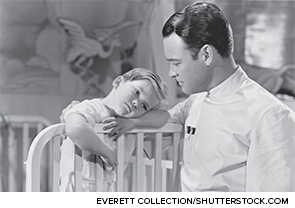 Approaches and procedures are in flux almost constantly in medicine, and three experts at a panel session shared their approaches to three different areas of care: tonsillectomy, sialendoscopy, and cultivating trust with patients.
Approaches and procedures are in flux almost constantly in medicine, and three experts at a panel session shared their approaches to three different areas of care: tonsillectomy, sialendoscopy, and cultivating trust with patients.
Explore This Issue
March 2015Hearing from colleagues can lead to a change in perspective and approach, said panel moderator Michael Friedman, MD, professor of otorhinolaryngology-head and neck surgery at Rush University in Chicago. “Doing procedures the way we did them when we were residents usually does not occur—there’s not a single procedure I do the same way I did a year ago,” he said. “I think one of the things that all of us look for is new ways to do the same thing.”
Tonsillectomy
Sukgi Choi, MD, chair of pediatric otolaryngology at the Children’s Hospital of Pittsburgh, reviewed approaches to tonsillectomy, for which there are newly emerging options, each with pluses and minuses.
The cold tonsillectomy, the most conventional approach, is still commonly used, although Dr. Choi said she does not often use it. The advantages are that the tools used are very simple and it’s inexpensive. The downside is the blood loss. “The total blood loss is not very high but does obscure field of vision,” she said.
With Bovie electrocautery, another inexpensive option used by many surgeons, the goal is to minimize damage to underlying tissue. “The major criticism of this technique is that there is thermal injury to the underlying musculature, a significant amount of post-op pain and also increased post-op bleeding,” she said.
With coblation, which uses radiofrequency energy and ionized saline, an advantage is that there is relatively low heat generated—just 45° to 85° Celsius, compared with 400° Celsius for electrocautery. Plus, suction is attached, improving visibility. There are some concerns about bleeding, since the low temperature doesn’t help seal blood vessels, but Dr. Choi said those findings are still debatable. The procedure is also expensive, she added.
Microdebrider intracapsular tonsillectomy leaves residual tonsillar tissue but has a high level of effectiveness and less post-operative pain and bleeding than more traditional methods. But again, Dr. Choi said, it is an expensive approach.Ultimately, she said, “The surgeon’s experience and skill matter more than the tools.”
Sialendoscopy
Arjun Joshi, MD, associate professor of head and neck surgery and microvascular reconstruction at George Washington University School of Medicine and Health Sciences in Washington, D.C., walked the audience through the steps of this procedure and said it is a tool that should be used more often in a diagnositc setting, and is especially useful in guiding management. “We don’t really have any good tool to study people who say that their gland is swelled,” he said. “And I think that diagnostic sialendoscopy is something that we should perform much more often because you’ll find so much more pathology than you were expecting.”